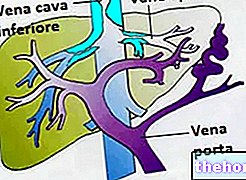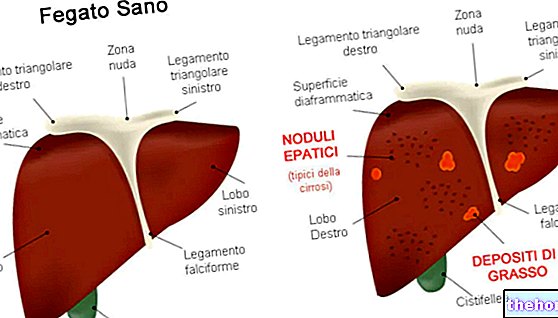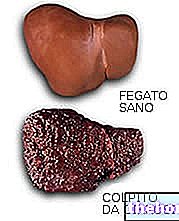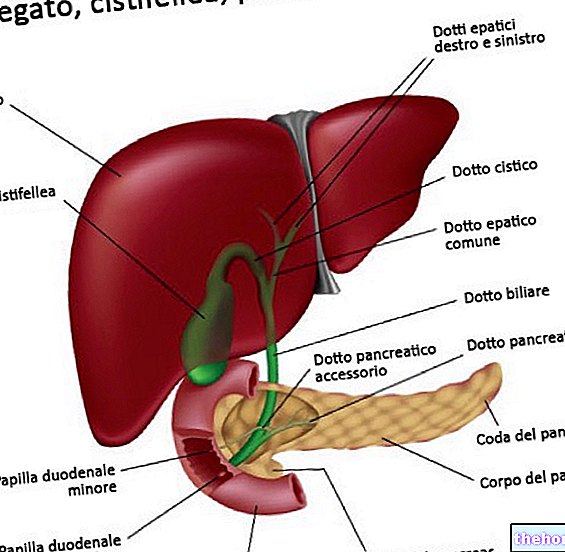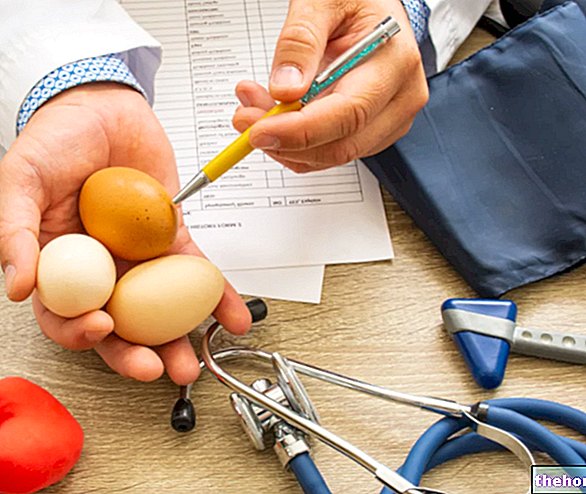Generality
Stones in the gallbladder (gallbladder) are one of the most common diseases of the biliary tract. Fortunately, these pebbles often do not give problems to the patient and only in rare cases are they responsible for a specific symptomatology. When this happens, however, violent pains arise, comparable, according to some, to those of childbirth.
To avoid complications or relapses, surgery is often suggested. Recently, thanks to the advent of modern technologies, "minimally invasive" techniques have been developed thanks to which the patient is discharged already after 1-3 days from "operation.
A little bit of Anatomy

The cystic duct connects the lumen of the gallbladder with the main biliary tracts, small "ducts" that originate from the liver and carry the bile DIRECTLY to the small intestine (duodenum). The gallbladder is therefore not a vital organ, since the the passage of bile is however allowed by other routes.
The last stretch of the biliary tract is the choledochus which ends in the duodenal ampulla of the Vater with a natural narrowing of the sphincter (sphincter of Oddi) into which the pancreatic duct of the Wirsung also flows (except for anatomical anomalies).
In addition to collecting and concentrating the bile (5-20 times), at the right moment, the gallbladder also pours it into the duodenum again through the choledochus.
Causes and Consequences
What are the Causes and Possible Consequences of the Formation of Gallbladder Stones?
When food passes from the stomach to the intestine, a series of chemical-mediated stimuli (CCK) cause the gallbladder to contract, which pours its contents into the small intestine.
Thanks to its chemical composition (water, bile salts, bilirubin, cholesterol and other fats) bile favors the digestion and absorption of lipids.
In particular conditions, cholesterol and the bile pigments it contains can precipitate, aggregating into small crystals that tend to accumulate over time.

The size of the stones are variable, sometimes they resemble grains of sand, other times they reach the size of a marble.
Unfortunately, there is also the possibility that these stones move from their position of origin to enclose the biliary flows and cause colic. In general, smaller stones, having greater mobility, are more dangerous than large ones since they can more easily occlude the biliary and pancreatic ducts when they move. This creates an obstacle to the escape of bile and substances secreted by the pancreas. This condition can cause one of the most serious complications of stones, called acute pancreatitis.
Fortunately, the consequences of gallbladder stones aren't always that bad. In most cases, gallbladder stones are discovered by chance and, in all likelihood, the patient diagnosed will not develop symptoms or complications in the following years. Other less fortunate individuals complain of digestive upset, nausea, vomiting, and visceral pain.
Classification
Types and Classification of Gallbladder Stones
Usually single, spherical, light-colored stone; it is more of a Caucasian ethnicity.The incidence increases with the progress of social and economic conditions and with age (middle age more frequent).
Brown pigmented stones are more common in low-level social environments with a high risk of infections; black pigmented stones are not associated with biliary infections but are common in patients with cirrhosis or blood disorders. This type of calculus is rarely found in Italy (mainly present in the southern and island regions).
This type of gallbladder stones is common in Western countries, probably due to the high rate of obesity, the lack of fiber in the diet and overeating, especially in the consumption of simple fats and sugars.
COMPONENTS OF BILE: water (80%), conjugated bile salts (10%), phospholipids (4%), cholesterol (1%), diglucuroid bilirubin and electrolytes.
Other articles on "Stones of the Biliary Tract and Gallbladder: Consequences and Classification"
- Risk factors, symptoms and complications
- Biliary colic and complications
- Diagnosis and treatment
- Gallbladder Stones - Medicines to Treat Gallbladder Stones
- Nutrition and Gallstones
- Diet and Gallbladder Stones
Gallstones - Video: Causes, Symptoms, Cures
Problems with playing the video? Reload the video from youtube.
- Go to the Video Page
- Go to Wellness Destination
- Watch the video on youtube

